Sigiriya Rock is perhaps the most photographed attraction in Sri Lanka. The 600 foot high rock sits in the Matale District but the ruins of the royal palace are what make it unique. Arthur C Clarke described King Kashyapa’s royal palace (500 CE) as the 8th wonder of the world and, in its day, it must have been stunning. It is still a sight to behold with the water gardens, rock gardens, cobra hood frescoes, mirrored wall, lion’s gate, and the remains of the palace at the summit.
Sigiriya Rock was designated a UNESCO World Heritage Site in 1982 and is part of the Sri Lanka Cultural Triangle along with Anuradhapura, Polonnaruwa, Dambulla, and Kandy. This region of Sri Lanka has been inhabited for a long time as evidenced by the nearby Megalithic Burial Sites and the rich history of the ruins of Polonnaruwa. Visiting Sigiriya Rock is an obvious addition to our best of Sri Lanka guide.
Guides and popular literature will tell you how Sigiriya was part pleasure palace and part fortress. Walking the grounds and climbing the rock, I found clues that point to a different interpretation of the facts. Could it be that Sigiriya is actually Alakamandava, the legendary city of the gods from Sri Lankan folklore? I’ll present the clues as I saw them, and let imagination and deduction guide you.


King Kashyapa’s Bloody Succession
Some parts of King Kashyapa’s story are very well known from Buddhist writings. For centuries, the monks compiled a history of the monarchy in a comprehensive book called the Culavamsa. The Culavamsa tells about King Dhatusena, who had two sons, Kashyapa and Moggallana. Moggallana was of royal blood and the rightful heir to the throne while Kashyapa’s mother was a commoner.
King Dhatsena’s nephew, Migira was a powerful royal. He was an army commander who begrudged the king for the execution of his wife. He conspired with Kashyapa and together they pulled a coup. With shades of Edgar Allen Poe, Kashyapa entombed his father alive and seized the crown. The rightful heir, Moggallana, fled to India, fearing for his life.
The facts of what happens next are well known. Kashyapa moved the capital from the well established Anuradhapura on the banks of the river Malvathu Oya to SigiriRock in the middle of a deep and inaccessible jungle. The whys of this move were not recorded. Perhaps, as the popular tale goes, he feared an attack from Moggallana. Our guide alluded to the poisoned politics in Anuradhapura and Kashyapa seeking a fresh start in a new capital. What else could a fresh start bring?
Another book, the Ravana Watha, describes a King Kassapa, son of Daathusena who selected Cithranakuta as his home. Cithranakuta is also known as Alakamandava, the city of the gods. The slightly different names for the monarchs are common from historical translations into the Cyrillic alphabet so this seems to be another chapter of the same story. In the Ravana Watha, King Kassapa was motivated to re-establish Cithrankauta because of his mother’s heritage. His mother was a Yakka, an indigenous tribe of Sri Lanka who are the fabled architects the Alakamandava in ancient history. How ironic would it be if King Kashyapa’s new capital was to proclaim his rightful lineage from his low born mother instead of his royal father?
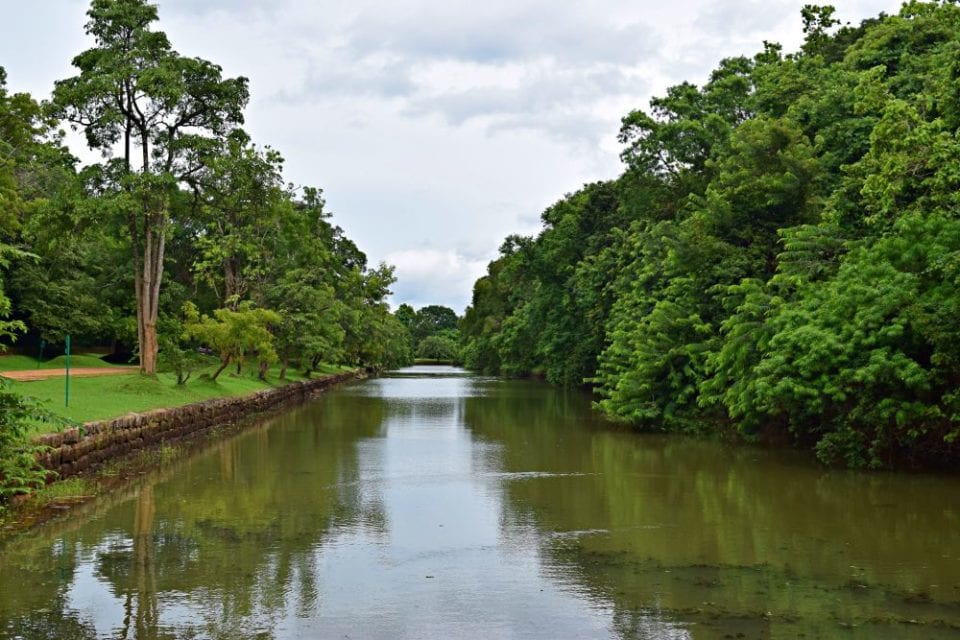
Sigiriya’s Outer Walls
We hired our guide in the parking lot when we arrived at Sigiriya. He spoke reasonable English but lacked a flair for storytelling. In retrospect, we might have been better served to do more study upfront and definitely visit the museum at the entrance. It should be noted that the foreign car park is not near the museum or ticket counter so if you are going to visit the museum, you need to go right after you pick up your tickets.
We approached Sigiriya through a pleasant, but nondescript park area. Each step brought the towering rock closer and closer. The Sigiriya ticket comes with three pull tabs: one for the gardens, one for the cobra hood, and one for the museum. After a couple of minutes, we reached the first ticket counter, where they pulled our garden tab and ushered us in.
This entrance definitely looked fortified. We crossed over a 15’ deep moat that our guide said was once filled with crocodiles and used to have a drawbridge to cross. He pointed to a foundation on the outside of the moat that he said once had walls 7’ tall. It was then that I started to wonder about the absolute truth of this interpretation.
I am no castle builder, but I have always seen the defensive walls placed behind the moat so you could assail your enemies as they are swimming across the croc infested waters. I would have clear passages behind the walls, so your own troops are mobile and can respond to breaches anywhere in the defense.
There were also fortifications missing. Where were the gatehouses to protect the drawbridge? A quick study from Google Maps shows that the moat also didn’t surround the entire property. Perhaps, only the front portions have been excavated, but perhaps, they were only an entry water feature.
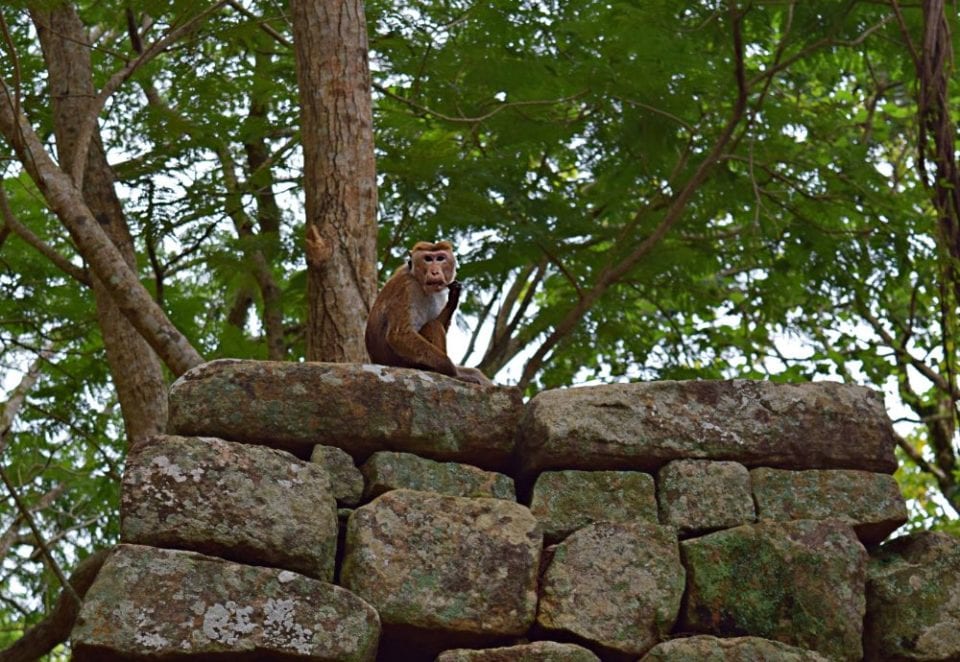
Water Gardens of Sigiriya
Arthur C Clarke drew inspiration from Sigiriya for his book, Fountains of Paradise. Even in their partially restored state, they were magnificent. Pools extended to the left and right of the main walkway leading to Sigiriya Rock. On the right, the pools have been fully excavated while on the left, they remained buried under the jungle soil.
Pool after pool, they extend in beautiful symmetry which is an amazing level of urban planning for the time. Consider the contemporary city of ancient Rome, which has nary a straight road to be seen. There are also fountains that still flow during the rainy season that are fed by underground pipes from the cisterns further up the hill.
The water garden was lavish indeed, but again I question our guides interpretation. He said how King Kashyapa had 500 wives, who he would watch bathing in the fountains all day. I imagine the pool at the Playboy Mansion isn’t square, but some kind of an oval to give Heffner a better view. Also, he wouldn’t put in a second pool in perfect symmetry across the way. It would only serve to dilute the view. If I were king, I would at least put in an elevated gazebo to watch the action from. Somehow, something was missing from the claims that these were pleasure pools.
I also don’t understand water gardens as an integral part of your defenses. I have been to castles in France and I have been to Versailles. With all of the fountains and gardens, Sigiriya felt much more like a palace than a fort. The inconsistencies were starting to mount as history came alive around us.
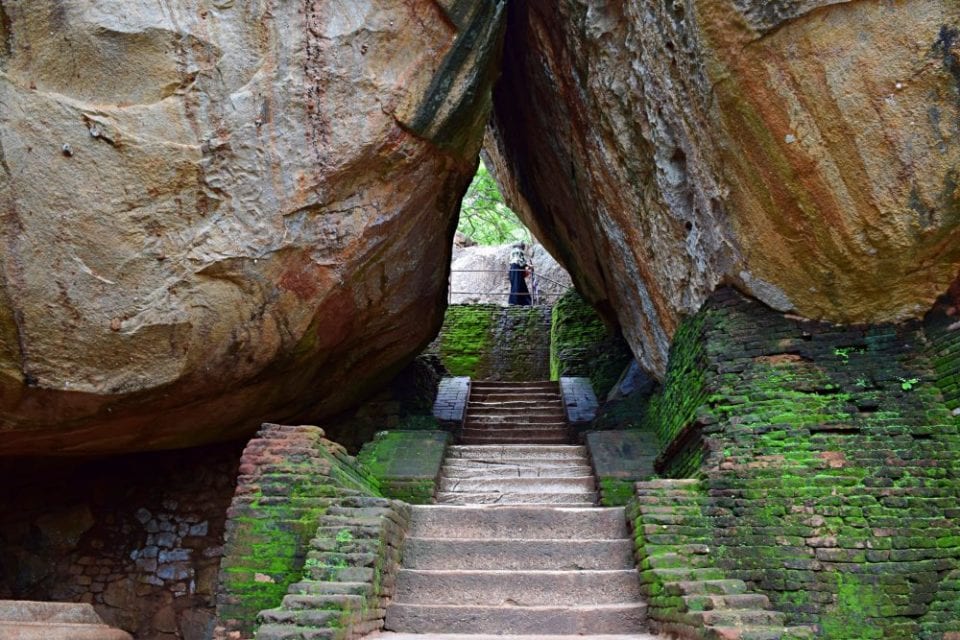
Boulder Gardens at Sigiriya
The boulder gardens are past the water gardens at the base of Sigiriya Rock. What makes these gardens special is that they are a strong counterpoint to the symmetry of the lower gardens. Paths enter through rock gates that naturally form around the perimeter. In one section of the rock gardens, there is a natural amphitheater, where the king would hold audiences. It’s rare, even in modern times, to have such dissimilar elements of symmetry and asymmetry side by side.
We stopped to take a few shots of monkeys climbing on the ruins, but we didn’t linger long in the rocks. We had finally reached the base of Sigiriya. 1200 steps and 660 vertical feet separated us from the summit and we were itching to go up.
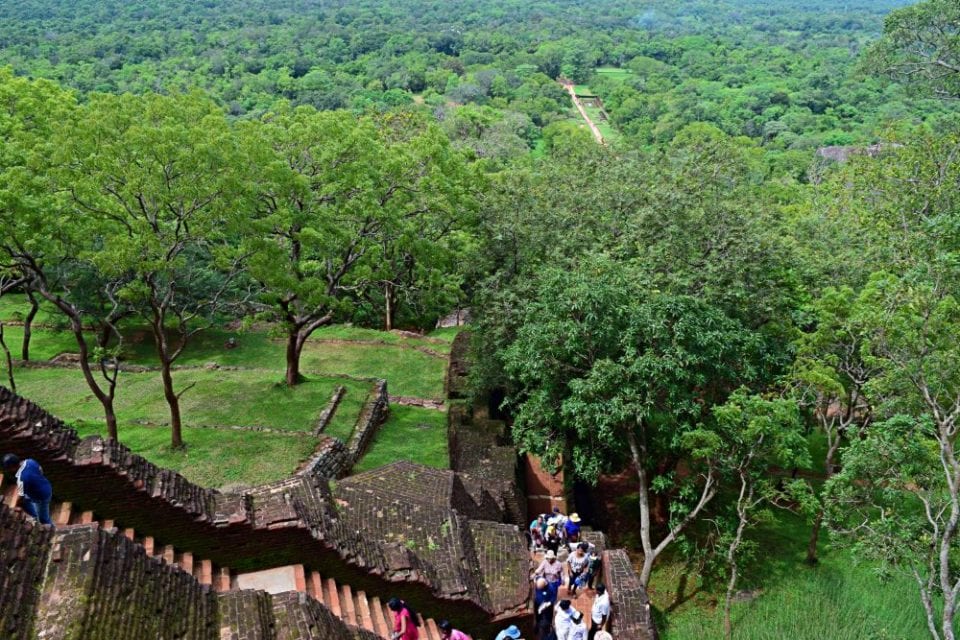
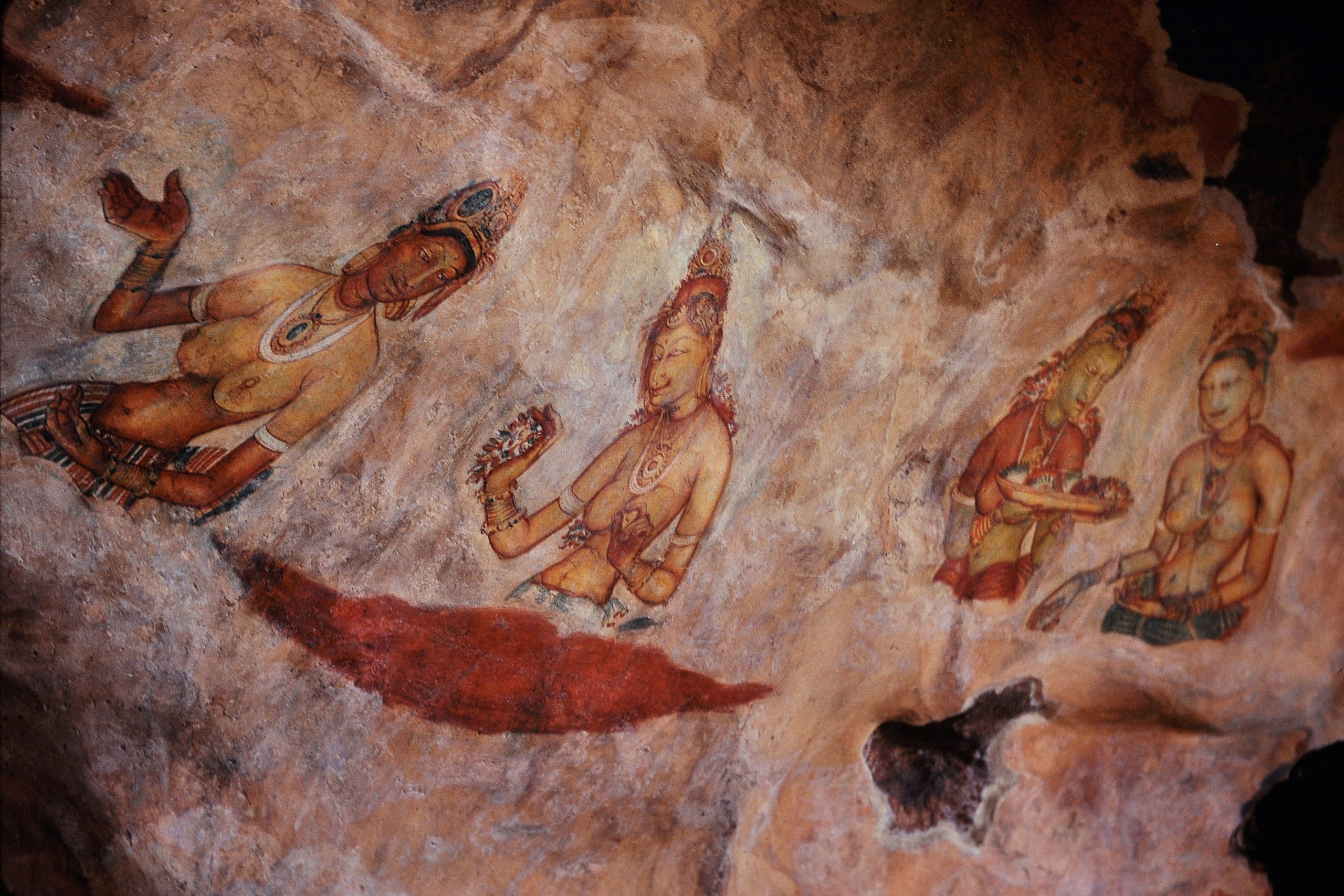
Frescoes on Sigiriya Rock
(Photography in the Cobra Hood is prohibited. Picture from Wikipedia)
Perhaps the most famous feature of Sigiriya are the frescoes. At one time, 500 frescoes adorned almost all Sigiyara rock, making it an open-air gallery. It’s not the paintings, but their subject that draws the most speculation. They are all topless women of all colors and ethnicities. It’s easy to see how one could assume Sigiriya was simply a pleasure palace of a playboy king.
After a brisk climb on the ancient terracotta steps, we reached a modern installation. A ticket collector took our second tab to see the frescoes and we climbed up a spiral metal staircase to the top of a rock formation called the Cobra’s Hood. Without the stairs, these frescoes would be inaccessible. Perhaps that is why they are the only ones remaining. Also, the perfect protection of the rock shelter kept them in pristine shape. They were beautiful, but photography was prohibited so we didn’t take any pictures. Perhaps these lovely ladies hold the secrets of Sigiriya.
Just beyond the Cobra’s Hood was the Mirror Wall. This is a walled path that leads from the Cobra’s hood to the final climb at the Lion’s Gate. Our guide told stories about how the wall was polished with honey until they shimmered with a perfect reflection. He said this was so King Kashyapa could see his painted ladies reflecting on the wall.
There were guards placed every 10’ to keep you from approaching the wall, because of the ancient tradition of travelers writing their stories there. In this ancient graffiti, the painted ladies find their voice. It’s in these inscriptions, some over a thousand years old, that we hear their story. This is how we know that at one time, frescoes adorned the entire mountain. We also can guess why they were removed.
When King Kashyapa began construction of Sigiriya, he moved an order of monks to the neighboring Pidurangala Rock. After his fall, Sigiriya was returned to the monks. Our guide said half naked ladies distracted the clergy during meditation, so they removed the offending frescoes. However, the monks returned in 495 CE, after Kashyapa’s death. Almost 700 inscriptions from the 8th, 9th, and 10th centuries have been translated from the wall that tell the story of 500 frescoes covering nearly all of the west wall nearly 500’ wide and 100’ tall. Did the offended monks wait five hundred years for their sensibilities to kick in?
Perhaps these ladies aren’t trophies from a playboy king’s harem at all. The book Ravana Watha infers that the blue ladies represent the Yakka Tribe. The other ladies could be from the Tribes of Naga (Cobra), Deva (Divine), and Ganadabhbha (Odors) with the flower motif representing the unity of the country. Could the frescoes actual be a symbol of the country unified under Yakka rule? All of the women pictured do have strong, indigenous features such as broad noses.
The monks appear to have tolerated the bare tatas for centuries, but quite possibly shifting politics decided to remove 50,000 square feet of Yakka propaganda. We may never know the true motivation for the desecration, but it would seem more likely related to whatever caused the pilgrimages to stop in the 10th century, than an uncharacteristic change of Buddhist tolerance.
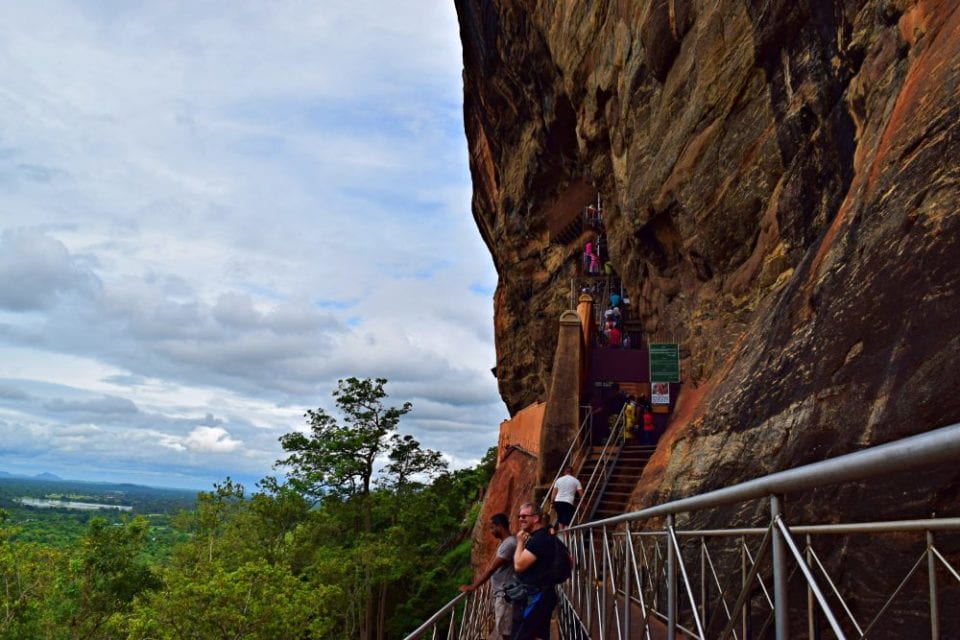
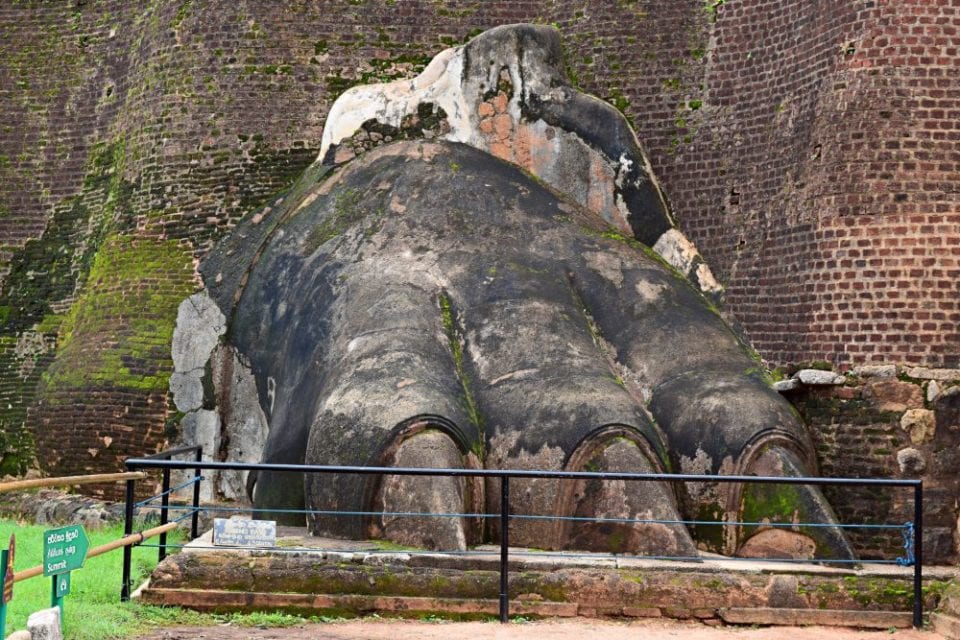
The Lion Gate at Sigiriya Rock
The Mirror Wall ends at a courtyard dominated by what once was the Lion Gate. All that remains of the structure are two giant paws flanking a staircase. At one time, the stairs led through the open mouth of a lion’s head that crouched between the paws. This must have been an impressive sight during any age.
We were shown an outcropping where a squatting guard would have to stay awake at his post or fall to his death. Our guide also pointed out a rock that was in the process of being raised on splints. The claim was that this massive boulder was poised to drop on invading hordes. Of course, an obvious weakness of this strategy was that it didn’t actually overhang any of the paths one would use to access the Lion Gate. In fact, very little if any defensive structures were build around this inner sanctum. Perhaps they collapsed long ago with the lion head, or perhaps they never existed in the first place.
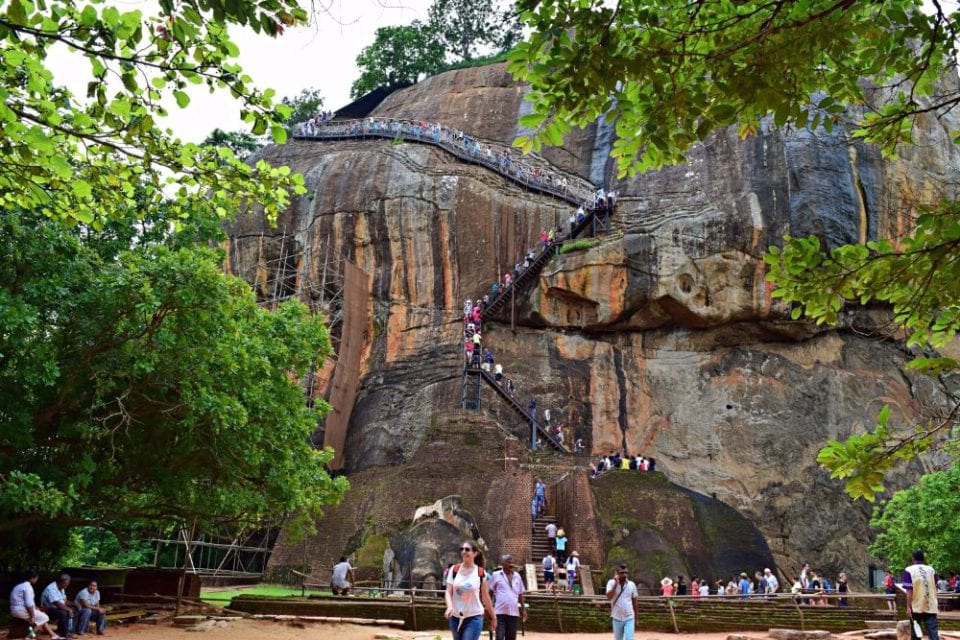
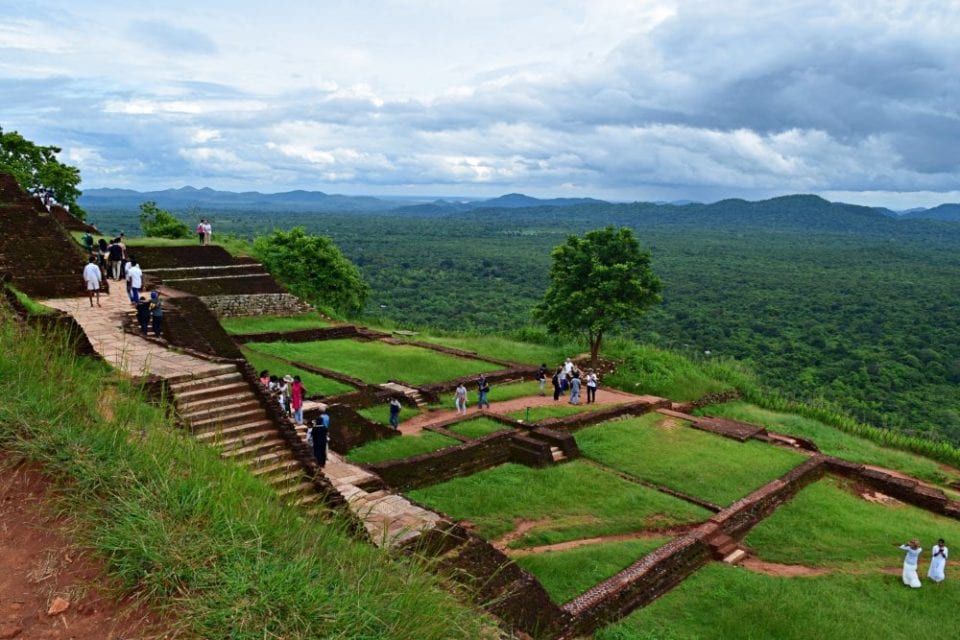
Palace in the Sky on the Summit of Sigiriya Rock
We climbed up the stairs between the lion paws. The old path was reinforced with steel steps and guardrails. Just a little bit more climbing and we came to the top of Sigiriya Rock. Our views extended in all directions 660’ above the ground. We could clearly see the symmetry of the water gardens below, but what drew our attention was the foundation of a vast palace on top of the rock. Room after room was laid out before our eyes and we only imagine the splendor of this place in its prime.
In addition to the massive palace, there was also cisterns bored into the rock that still functioned 1500 years later. With the palace and ample water, King Kashyapa stayed up here during the heat of the summer instead of sweating on the valley floor below. Which brings us to our final questions about the traditional story of Sigiriya being a fortress.
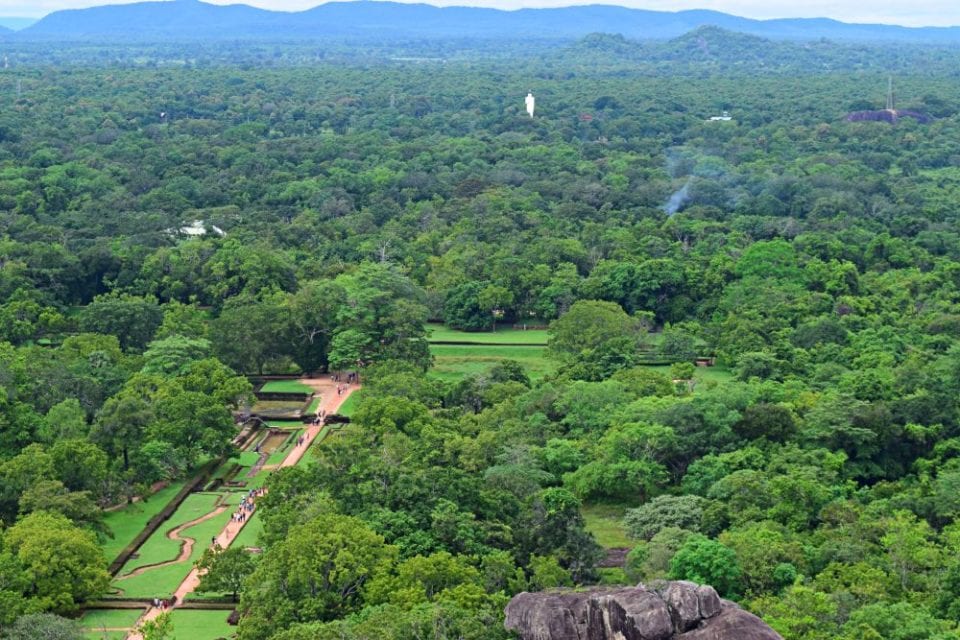
The Siege of Sigiriya
King Kashyapa’s reign lasted 18 years. His legacy was built along with Sigiriya, but he stayed relatively sequestered in his palace. According to the well-maintained text of the Culavamsa, the rightful heir Moggallana returned to Sri Lanka and marched unopposed to Sigiriya. There, he issued a challenge to Kashyapa to meet on the field of battle.
For the people who believe Sigiriya was a fortress built to defend against the assault of Moggallana, Kashyapa did an unbelievable thing. He left the safety of Sigiriya and engaged his brother in the open field. Of course, if Sigiriya was, in fact, a palace and a symbol of Yakka rule, then it would make perfect sense not to turn it into a war zone.
The battle was short and decisive. Kashyapa’s and Moggallana’s armies lined up against each other. Soldiers standing shoulder to shoulder and armored elephants taking the part of the heavy cavalry. For some inexplicable reason, Kashyapa troops retreated and he was left alone in the field. Folklore says he drew his dagger and sliced his own throat in a final act of defiance.
The stories are conflicted about why there was such an egregious strategic error as to have the king captured in the open moves. This fool’s mate might have come from fowled communication or treacherous terrain. It might have been caused by Moggallana’s eighteen patient years in India until he could plant the perfect bloodless repatriation. The only thing we are sure of is that the battle took place outside of Sigiriya. That is perhaps the strongest evidence that Sigiriya was a palace and not a fortress. We may never know the full secrets of Sigiriya, but we should still take time to imagine the wonder and history of such an amazing place.
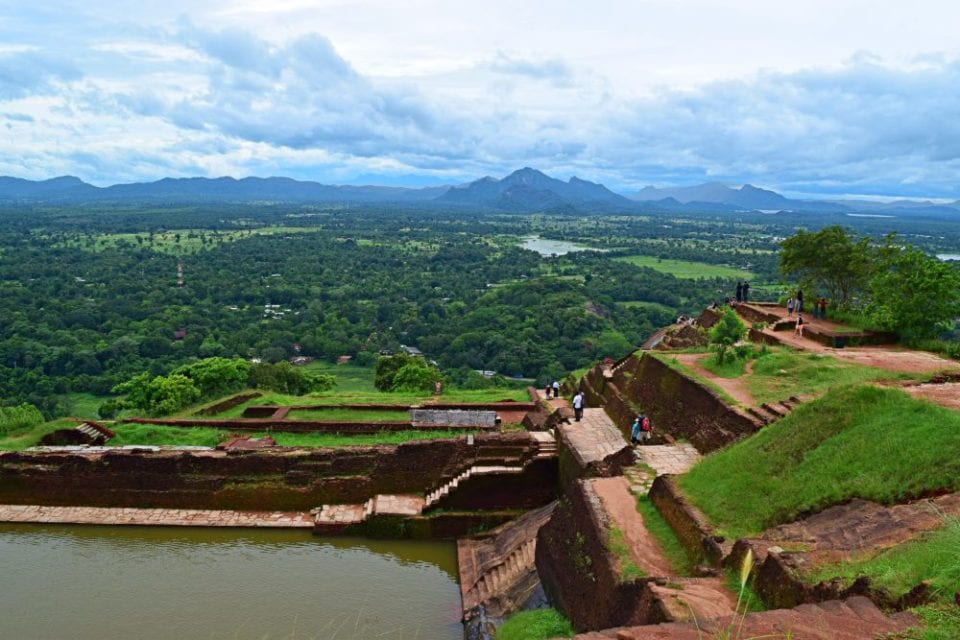
Visiting Sigiriya Rock
Sigiriya Rock is in Central Sri Lanka, near the town of Dambulla. Every beach town will offer a day tour here that will consist of a lot of driving and climbing the rock in the middle of the day. If you have the time in your schedule, it would be better to stay in the area and make the climb earlier in the day to avoid the heat, crowds, and afternoon rain showers. We were able to arrange transportation directly from our Ayurvedic Retreat, Mahagedara Wellness Retreat, which was a few miles away, but there are a lot of options for room and board on Sigiriya Road, just outside of the site. It was about $30/person to enter which included a visit to the museum but not a guide. I wouldn’t let price dissuade you from going. It is absolutely worth it and the money goes to preserve the archaeological site.
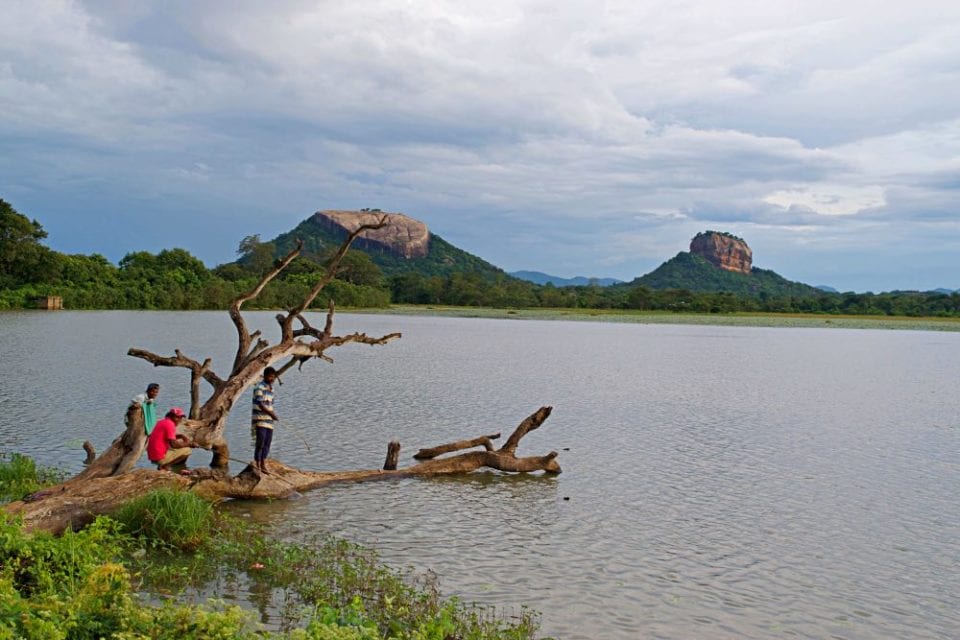
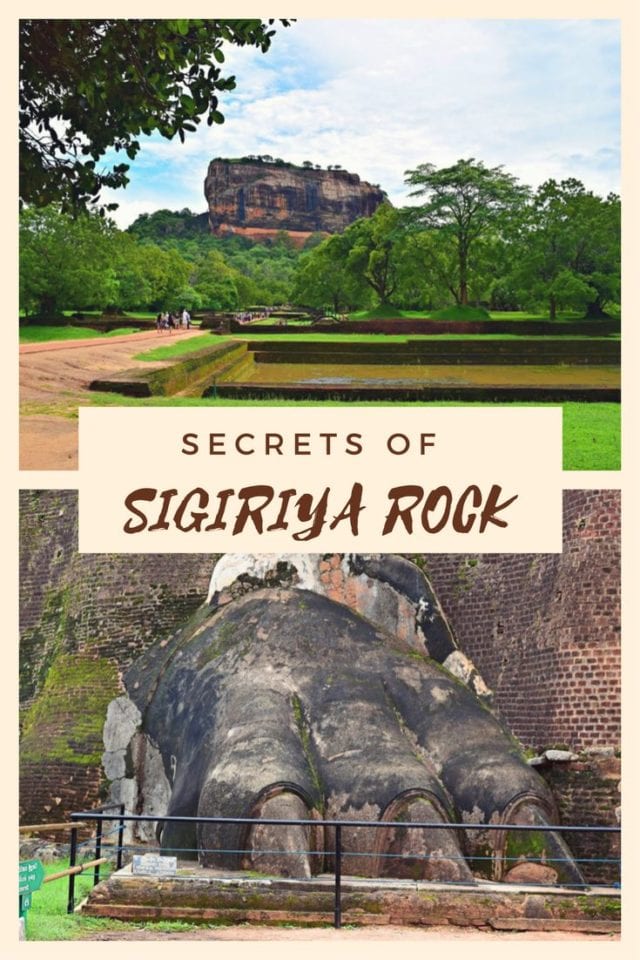
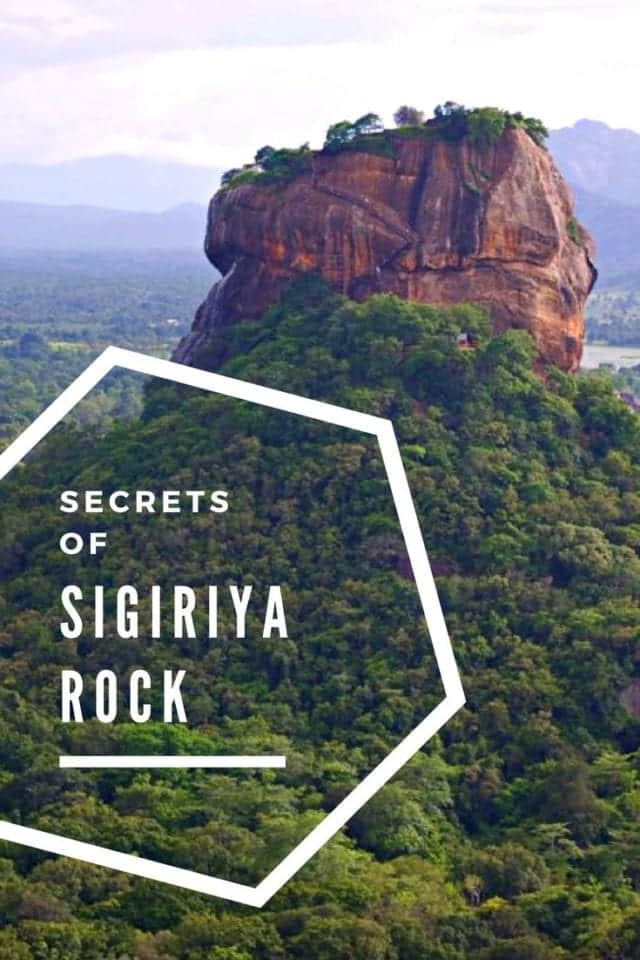
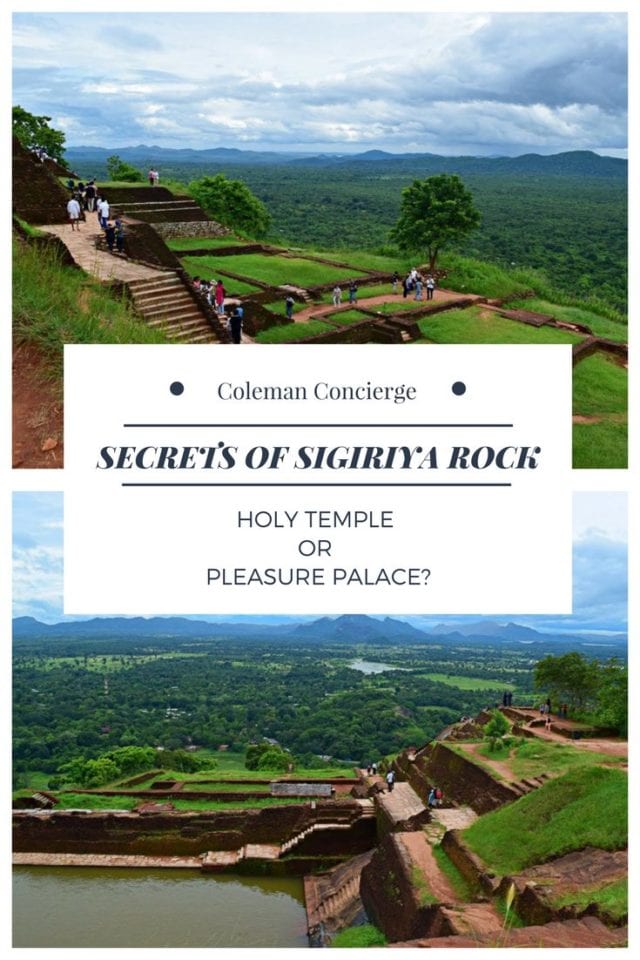
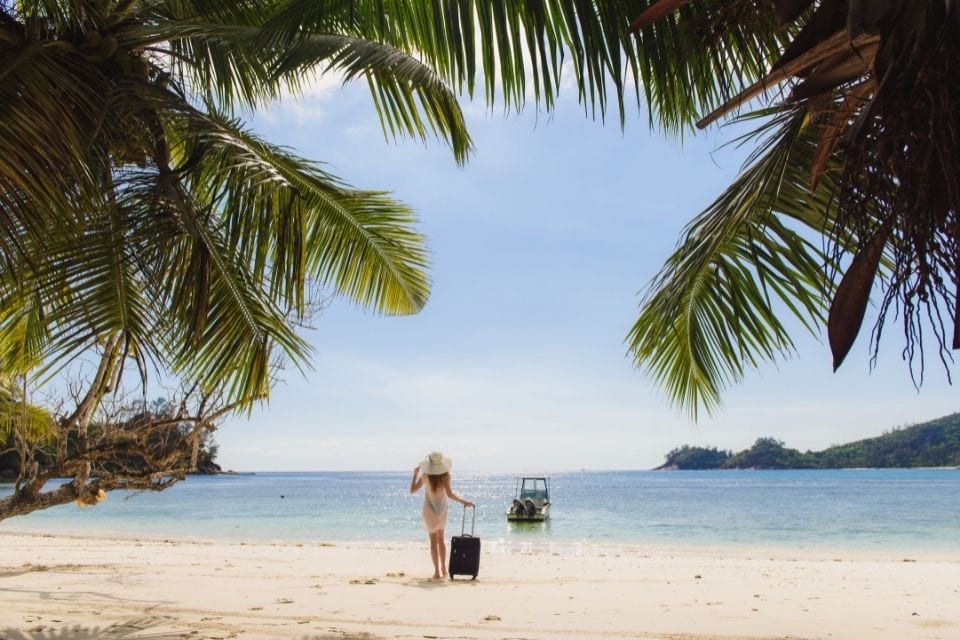
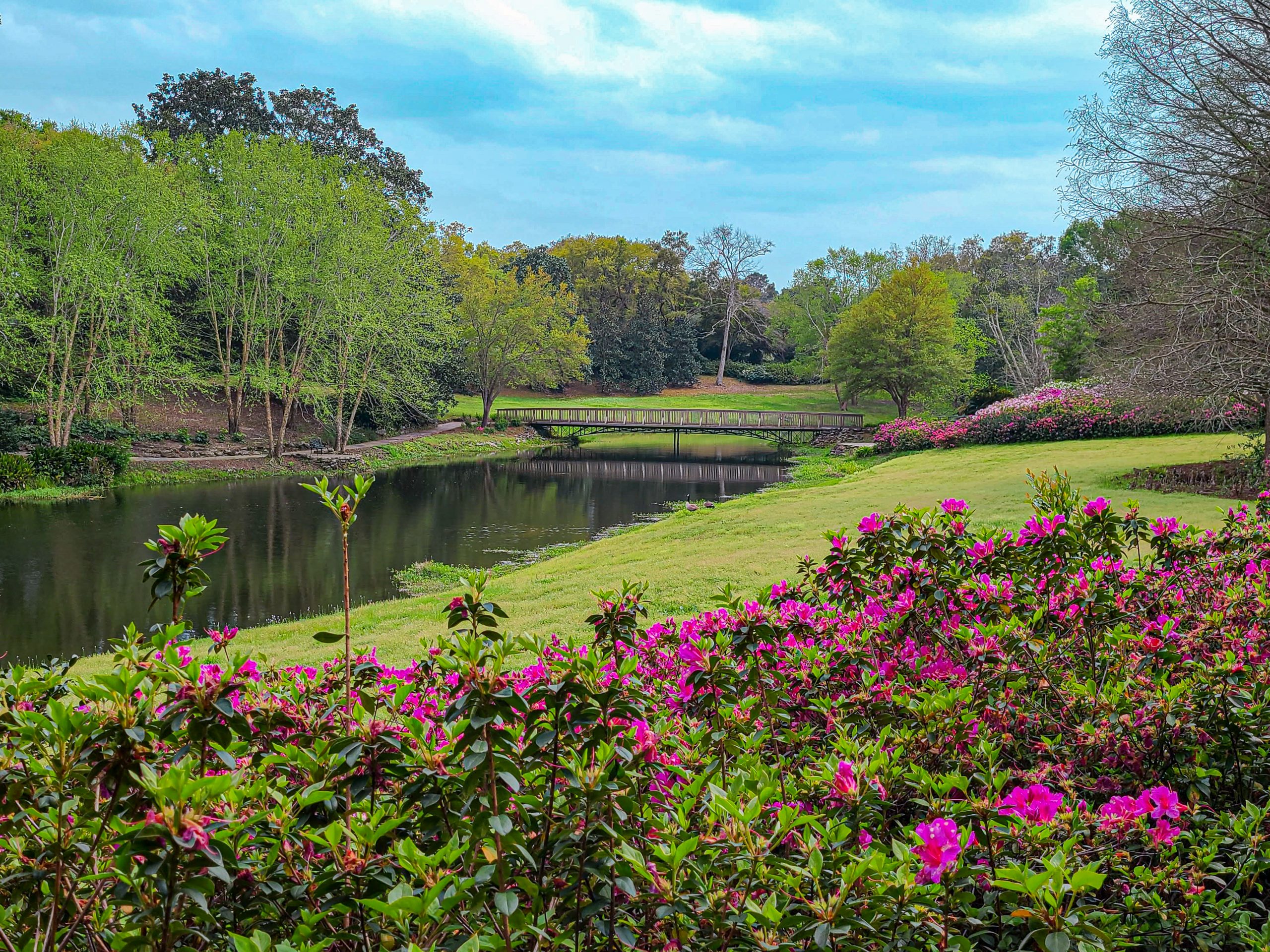

 Hi! We are Jenn and Ed Coleman, and together we are Coleman Concierge. It is our goal to inspire you to get out, expand your world, and to seek adventure, even in your own backyard.
Hi! We are Jenn and Ed Coleman, and together we are Coleman Concierge. It is our goal to inspire you to get out, expand your world, and to seek adventure, even in your own backyard.












